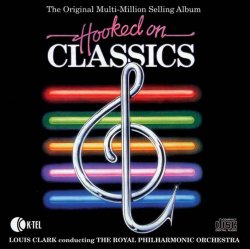Related Research Articles
The Piano Quintet in F minor, Op. 34, by Johannes Brahms was completed during the summer of 1864 and published in 1865. It was dedicated to Her Royal Highness Princess Anna of Hesse. As with most piano quintets composed after Robert Schumann's Piano Quintet (1842), it is written for piano and string quartet.

The Symphony No. 94 in G major is the second of the twelve London symphonies written by Joseph Haydn. It is popularly known as the Surprise Symphony.
Piano Sonata No. 15 in D major, Op. 28, is a piano sonata by Ludwig van Beethoven. The name Pastoral or Pastorale became known through A. Cranz publishing of Beethoven's work, but was first coined by a London publisher, Broderip & Wilkinson. While not as famous as its immediate predecessor, Piano Sonata No. 14, it is generally admired for its intricate technicality as well as for its beauty. The sonata takes roughly twenty-five minutes to play with its intended repeats.

Ludwig van Beethoven's Piano Sonata No. 2 in A major, Op. 2, No. 2, was written in 1795 and dedicated to Joseph Haydn. It was published simultaneously with his first and third sonatas in 1796.
Frédéric Chopin's Piano Sonata No. 3 in B minor, Op. 58, is the last of the composer's piano sonatas. Completed in 1844 and dedicated to Countess Élise de Perthuis, the work is considered to be one of Chopin's most difficult compositions, both technically and musically. The work has a structure similar to Johann Nepomuk Hummel's Piano Sonata No. 5 in F Sharp Minor, Op. 81.
Antonín Dvořák's Serenade for Strings in E major, Op. 22 (B. 52), is one of the composer's most popular orchestral works. It was composed in just two weeks in May 1875.
Antonín Dvořák's Piano Quintet No. 2 in A major Op. 81, B. 155, is a quintet for piano, 2 violins, viola, and cello. It was composed between August 18 and October 8, 1887, and was premiered in Prague on January 6, 1888. The quintet is acknowledged as one of the masterpieces in the form, along with those of Schumann, Brahms and Shostakovich.

The Fantasia in F minor by Franz Schubert, D.940, for piano four hands, is one of Schubert's most important works for more than one pianist and one of his most important piano works altogether. He composed it in 1828, the last year of his life. A dedication to his former pupil Caroline Esterházy can only be found in the posthumous first edition, not in Schubert's autograph.

The Piano Quartet No. 3 in C minor, Op. 60, completed by Johannes Brahms in 1875, is scored for piano, violin, viola and cello. It is sometimes called the Werther Quartet after Goethe's The Sorrows of Young Werther. The premiere took place in Vienna on November 18, 1875, to an anxious public. Richard Wagner and his wife Cosima were in attendance.

The Cello Sonata No. 2 in F major, Op. 99, was written by Johannes Brahms in 1886, more than twenty years after completing his Sonata No. 1. It was first published in 1887. It was written for, dedicated to and first performed by Robert Hausmann, who had popularised the First Sonata, and who would the following year be given the honour of premiering the Double Concerto in A minor with Joseph Joachim.
The Cello Sonata, Op. 65, is a work by the English composer Benjamin Britten. It was premiered in July 1961 at the Aldeburgh Festival in Suffolk. The work is in five movements:
- Dialogo. Allegro
- Scherzo-Pizzicato. Allegretto
- Elegia. Lento
- Marcia. Energico
- Moto perpetuo. Presto

The Piano Sonata in B minor, Op.5, was written by Richard Strauss in 1881–82 when he was 17 years old. The Sonata is in the Romantic style of his teenage years. The first recording of the piece was the last recording made by the Canadian pianist Glenn Gould.

Hooked on Classics, produced by Jeff Jarratt and Don Reedman, is a multi-million selling album recorded by Louis Clark and the Royal Philharmonic Orchestra, published in 1981 by K-tel and distributed by RCA Records, part of the Hooked on Classics series.

Hooked on Classics 2: Can't Stop the Classics is an album by Louis Clark and the Royal Philharmonic Orchestra, published in 1982 by K-tel, part of the Hooked on Classics series.
References
- ↑ "Benjamin Britten : Simple Symphony, Op. 4". Chester Novello. Retrieved 29 December 2011.
- ↑ Potter, Michelle. "'Simple Symphony': Walter Gore". Michelle Potter On Dancing. Retrieved 4 January 2014.
- Evans, Peter (1979). The Music of Benjamin Britten. Dent. ISBN 0-460-12607-5.
- Carpenter, Humphrey (1992). Benjamin Britten: A Biography. Faber & Faber. ISBN 0-571-14325-3.